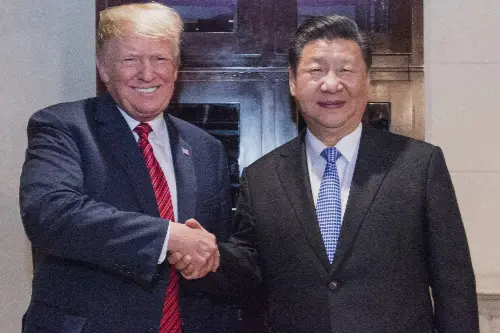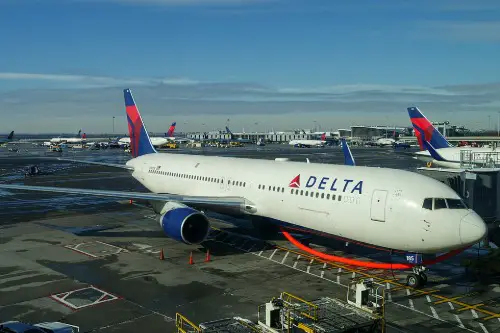1. U.S.-China Tariff Disputes

Americans might not realize it, but the ongoing tariff disagreements with China have a direct impact on what ends up in their shopping carts. Electronics, clothing, and even toys from China often carry slightly higher prices due to these trade tensions. Businesses import goods and pass the cost along to consumers, which can make everyday items more expensive. It’s not just a corporate problem—it trickles down to the wallet of the average American.
The tariffs also affect supply chains, causing delays in product availability. That new phone or gaming console you’ve been waiting for? Sometimes it sits longer in warehouses because of slowed imports. Smaller companies feel the pinch even more, struggling to absorb costs or find alternative suppliers. In the end, what seems like a distant geopolitical dispute quietly shapes domestic consumption.
2. Steel and Aluminum Tariffs

When the U.S. imposed tariffs on steel and aluminum imports, many Americans didn’t notice the ripple effect. These metals are foundational to cars, appliances, and construction materials, meaning the tariffs subtly increase the cost of houses, cars, and appliances. Even if you’re not buying steel directly, it sneaks into the price of almost everything built with metal. Manufacturers often have to adjust their budgets, sometimes cutting back elsewhere, which can influence jobs and production.
Companies dependent on metal imports have had to explore other sources, sometimes at higher costs. Some have shifted production abroad, which can slow delivery times and raise prices domestically. The tariffs were meant to boost U.S. manufacturing, but for everyday consumers, the cost shows up quietly on receipts. It’s a case where trade policy directly touches daily life without a headline in your local news.
3. U.S.-EU Aircraft Subsidy Disputes

The long-running feud over subsidies to Boeing and Airbus affects airline tickets, even if travelers don’t realize it. Both companies receive support from their governments, sparking complaints and retaliatory tariffs. These disputes make airplane parts and planes themselves more expensive, costs which airlines can pass along to passengers. That budget ticket might be a bit pricier because of these international disagreements.
Airlines also face uncertainty in long-term planning due to potential tariffs. Maintenance costs can rise when imported aircraft components get taxed. Business travelers might notice slight increases in flight costs or fewer route options. Ultimately, subsidy fights between governments subtly ripple into personal travel budgets.
4. U.S.-Mexico-Canada Agreement (USMCA) Adjustments

Even after replacing NAFTA, the USMCA has nuanced impacts that many Americans overlook. Automotive rules of origin and labor provisions mean cars made in Mexico might cost a bit more to meet the new standards. Dairy and agriculture regulations have shifted access and pricing for certain products. While the deal strengthens North American trade, these small adjustments filter down into grocery and retail prices.
Companies had to rework supply chains to comply with stricter rules. Some car models now have slightly higher prices due to required U.S. content. Dairy farmers in the U.S. face new competition, affecting pricing at the store. The agreement’s changes are subtle but measurable in everyday purchases.
5. U.S.-Japan Trade Tensions on Agriculture

Trade disputes with Japan over agricultural goods can affect Americans at the supermarket. Products like beef, pork, and certain fruits are part of ongoing negotiations. Tariffs or quotas in this area may lead to higher prices or limited availability. Many shoppers might not even realize that their favorite imported fruit is influenced by trade talks.
Farmers in the U.S. also adjust their planting and export strategies in response to these tensions. This can influence domestic supply and market pricing. Specialty foods, often considered luxury items, are particularly sensitive to these disputes. The chain reaction reaches consumers indirectly but consistently.
6. Solar Panel Tariffs

Solar panels might seem like a niche product, but tariffs on imported panels affect the push for clean energy in the U.S. Costs for residential and commercial installations have been influenced by these tariffs, sometimes slowing adoption. Builders and homeowners feel the pinch when upfront costs rise. This means Americans may be paying more for renewable energy solutions than necessary.
The tariffs were intended to protect domestic manufacturers, but adoption rates can decline if costs rise. Government incentives can only do so much when the base price jumps. Solar installers have had to balance affordability with profitability, sometimes passing costs to consumers. Even if most people aren’t buying panels today, these policies shape future energy bills.
7. U.S.-India Trade Disagreements on Pharmaceuticals

Disputes with India over drug tariffs and intellectual property can affect prescription medication costs. Many generic drugs imported from India help keep healthcare prices down. When trade tensions lead to higher tariffs or supply disruptions, Americans may face more expensive medications. For someone managing chronic conditions, this can quietly affect their budget.
Pharmaceutical companies sometimes shift production to mitigate tariff impacts. This can delay the availability of cheaper alternatives in pharmacies. Even minor price changes in generics ripple through insurance and out-of-pocket expenses. Consumers might not notice right away, but trade policy is quietly shaping healthcare costs.
8. U.S.-Vietnam Trade on Textiles

Textile trade conflicts with Vietnam impact the clothing Americans buy every day. Tariffs or import restrictions make garments slightly more expensive. Retailers may also limit the number of items they import, reducing variety in stores. Shoppers might assume these changes are seasonal, but they’re often tied to international trade decisions.
Smaller brands that rely on Vietnamese manufacturing feel the pressure most. They either absorb costs or pass them along to consumers. Fashion supply chains are global, so even subtle trade disputes have domestic effects. The result is an invisible squeeze on your wardrobe budget.
9. Rare Earth Mineral Competition

The U.S. depends heavily on rare earth minerals from countries like China for electronics and renewable energy tech. Trade conflicts over these minerals can influence prices of smartphones, laptops, and electric vehicles. Even subtle supply restrictions ripple through manufacturing, impacting final retail costs. For consumers, this shows up in higher prices or delayed product launches.
These minerals are crucial for high-tech applications. Companies scramble for alternatives or domestic sources when trade tensions rise. Mining and processing domestically can be expensive and slow. The end effect: Americans pay more for high-tech products without even realizing why.
10. Coffee Tariffs and Trade Barriers

Coffee drinkers may not notice, but U.S. tariffs and disputes with producing countries subtly affect their daily cup. Tariffs or trade restrictions on beans from Brazil, Colombia, or Vietnam can lead to slightly higher prices. Coffee shops might adjust pricing or sourcing to balance costs. It’s a classic example of a small change abroad showing up in a morning ritual at home.
Producers face uncertainty when tariffs or import quotas shift. Retailers must adapt supply chains, sometimes paying more to maintain consistent quality. This extra cost trickles down to consumers, making their daily coffee habit a little more expensive. Even casual drinkers feel the impact indirectly.
11. U.S.-South Korea Trade in Automobiles

Trade conflicts with South Korea on car exports influence pricing in the U.S. Market access and potential tariffs affect the cost of importing certain vehicles. Even domestically built cars can be impacted if parts come from South Korea. Consumers may see higher sticker prices or fewer models available in showrooms.
Manufacturers adjust production and supply strategies to navigate these disputes. Components sourced abroad may get rerouted or replaced with pricier alternatives. Sales promotions or availability could be limited, subtly shifting consumer choice. It’s a quiet effect, but one felt every time someone goes car shopping.
12. U.S.-Turkey Steel and Aluminum Issues

Even though Turkey isn’t the first country Americans think of in trade disputes, steel and aluminum tariffs affect U.S. industries. Construction materials, machinery, and automotive components can all see slight cost increases. The tariffs are designed to protect domestic producers, but everyday buyers may bear the cost indirectly. Your new kitchen appliances or car parts may be more expensive than they would otherwise be.
Importers have to navigate uncertainty when tariffs shift suddenly. Companies may stockpile materials or pass costs along to customers. Even small fluctuations in trade policy have a cumulative effect on domestic pricing. The conflict demonstrates how a country far from home can impact daily American life without headlines.
This post 12 Trade Conflicts That Are Affecting Americans Without Them Noticing was first published on American Charm.


